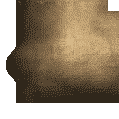







A
Brief History of Japanese Swordsmanship; The Warrior and Kendo
Plinio
Romero
The sword has been a principal aspect
of Japanese history and culture since the earliest records of the nation.
References to swordsmanship can be found in the Kojiki (Records of Ancient
Matters), and the Nihon Shiki (History of Japan), two of the oldest
surviving records of Japanese history. The ancient legends of the Shinto
that tells of the origins of the Japanese islands themselves refers to a
bladed weapon which was dipped into the sea and the drops of water from the
tip of the weapon became the islands of Japan.
Japanese legend says that a gifted
sword maker called Amakuni was the person that developed the classical
styled Japanese sword and blade that we are accustomed to today. Amakumi is
thought to have lived between 720 AD and 940 AD. Before this time, swords
where developed from copies of the straight Chinese double or single edged
swords. Two important things happened with the invent of the Japanese single
edged, curved blade. First, the blade became a much more effective cutting
weapon, even against armor. And second, its deployment change, which led to
the rise of a distinct style of Japanese swordsmanship.
During the feudal times of Japan, the
sword was an important instrument in the establishment of social and
political rule. The early part of the Japanese history is largely dominated
by wars between various provinces. Feudal lords employed armies of Samurai
warriors to defend land, conquer enemies, and maintain order throughout out
their province. Swordsmanship was one of the basic skills and disciplines of
the warrior at the time. A strict regiment of training was developed for the
mounted and foot soldiers so that techniques could be taught to the warrior
in an efficient and systematic way. Techniques, which are thought by schools
of swordsmanship still to this day.
The samurai class was officially
disbanded by the Emperor Meiji in the later 1800ís. Later, they where
stripped of their official badge of office, the wearing of two swords in
1876. This event gave rise to the last great battle of the samurai, the
Satsuma Rebellion in December of 1877 through January of 1878. The Satsuma,
lead by Saigo Takamori, refused to obey the order to disarm and fought the
conscript government army at Kagoshima. The samurai where killed to the last
man and their sacrifice has become a poignant symbol of the swordsman and
made Takamori the last of the samurai warriors.
Since old-fashioned styles of training
with real or hardwood swords caused many injuries and deaths, less harmful
bamboo practice swords were created sometime in the early 1700ís, by
Japanese sword masters in the hope that the art of swordsmanship would the
able to be practiced in a safe manner, so that the art would continue to
flourish throughout the ages. Around the 1740ís, masters of swordsmanship
began to improvise head and chest protectors as well as heavy gloves to
protect the wrist area. At this time the early armor was crude and of simple
construction. Over the centuries, practice armor has been refined into the
attractive and practical Kendo equipment that we see today.
Kendo, the art of Japanese
swordsmanship, is a way of life designed to contribute to self-development
through training in the guiding principles underlying the art of the sword.
Kendo as it is practiced today is the
result of refinements of the sword spanning over more than one thousand
years. For the greatest part of history, swordsmanship was practiced almost
exclusively by the bushi (the warrior class of Japan). For the samurai of
that time: perseverance, strength of character, steadiness and self control
in all situations, where the goals that lay at the end of a life time of
studying the art of swordsmanship. These are still the practitionersí aim.
Therefore, today Kendo is not practiced with the aim to destroy, but to
build character. Today, Kendo is practiced by millions of people all around
the world, as it has developed a strong sporting aspect, while still
cultivating a sharp mind and a strong spirit.







